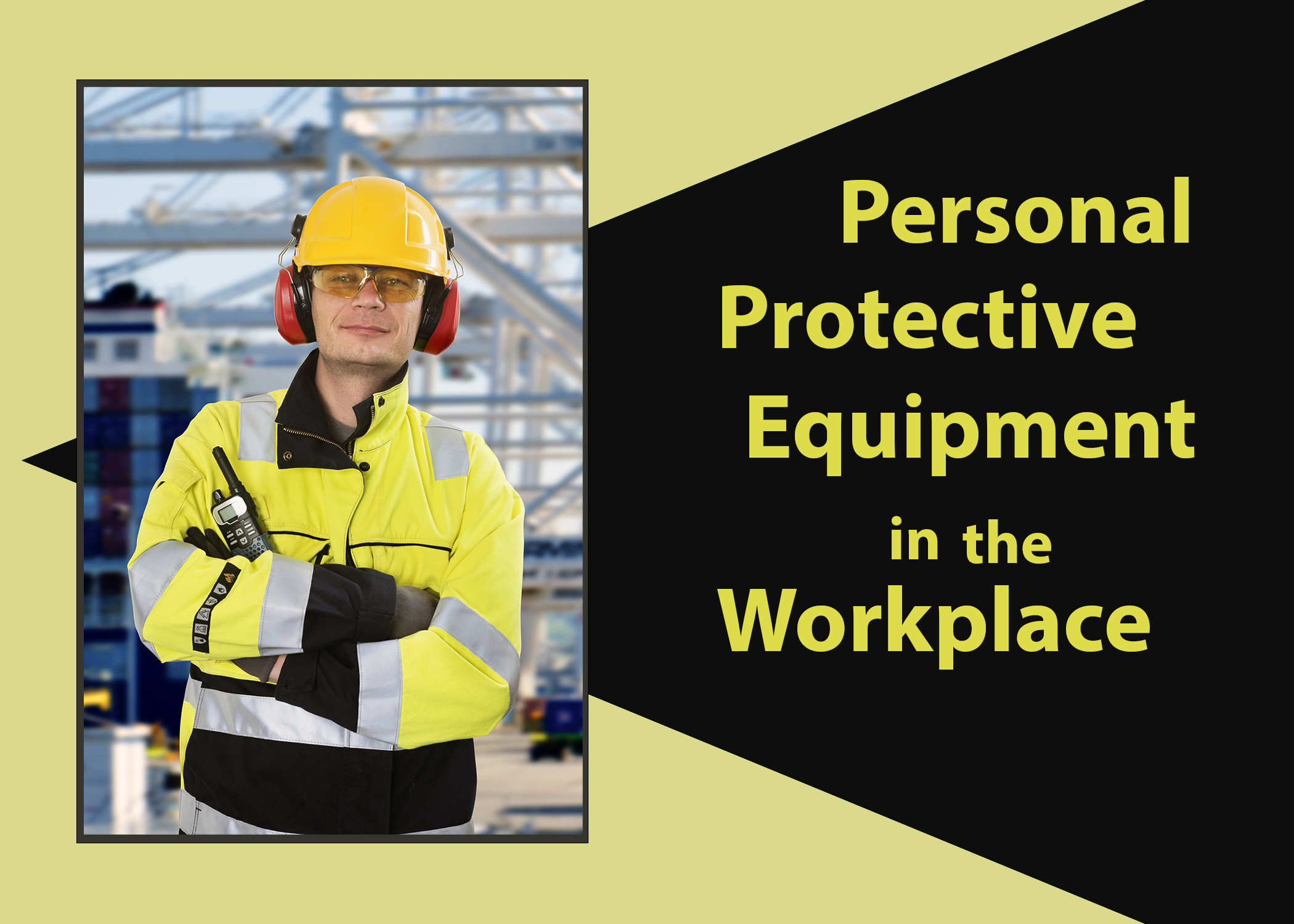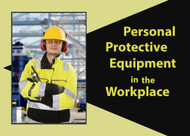Personal Protective Equipment: Importance and Benefits
Posted by Premier Safety on Nov 22nd 2021

Personal protective equipment or PPE safeguards users against hazards or physical harms they may encounter at the workplace. Such equipment may include hard hats, earplugs or other hearing protection devices, safety glasses with side shields and face shields, gloves, boots, respirators, and chemical-resistant clothing. These types of devices help keep employees safe while performing occupational tasks.
However, many workers are not familiar with their application and proper use. Thus, we've prepared this short yet comprehensive article to discuss why PPEs are crucial to the safety of workers. The top benefits include:
Protection from Workplace Harms and Hazards
Personal protective equipment or PPEs can save lives by protecting workers from injury, illness, burns, lacerations, and other occupational mishaps from machines and materials that can cause severe damage. They also prevent the spread of infectious diseases like influenza and tuberculosis by covering skin, mouth, and nose and reducing physical proximity between people.
At a minimum, the must-have PPEs at your workplace include:
- Safety glasses or goggles for an eye injury
- Gloves for hand injuries
- Hearing protection for noise exposure from loud machinery or other sounds at work
- A respirator for protecting workers against insufficient oxygen environments, contaminated air, harmful dust, smoke, sprays, etc.
- Special footwear that protects against hazards like tripping or slipping on wet floors
What is a Personal Protective Equipment (PPE)?
In a nutshell, personal protective equipment or PPE, refers to any wearable device that an employee might utilize to prevent any workplace hazards while on the job. This can include anything from gloves and an apron for a cook to a full-body suit for a firefighter. PPE can include helmets, eye protection, body protection, feet and hand protection, and any other equipment that serves the same goal, depending on the nature of the job. Employers are also responsible for instructing employees on how to utilize appropriate personal protective equipment and ensuring that they comply.
Types of Personal Protective Equipment
Since personal protective equipment differs by industry, specific types of protective equipment are suitable for specific types of work. For example, construction workers must clearly wear helmets to protect their heads and steel-toed boots to protect their feet. Much of this is influenced by the frequency to which certain types of work-related injuries occur. Meanwhile, while working in a biochemical lab, and the list of PPE employees that must be provided alters drastically. In that circumstance, lab "moonsuits" are far more likely.
1. Protection of the Eyes (Safety Glasses)
Goggles and safety glasses are the most popular types of equipment for the eyes and facial area near them. Eye protection is required even in office and lab work where there is a risk of flying debris or airborne particles. It's interesting to note that it's also useful in other fields, such as cooking, however, criteria differ and most commercial kitchens don't require eye protection.
2. Respiratory Protection
Breathing apparatus is required when employees are exposed to dangerous materials that can be inhaled. This could be as basic as a mask with filters or as complex as a whole breathing system with an oxygen tank connected to it. Furthermore, not only is training required for operation but the respiratory protection equipment must be examined on a regular basis to ensure that it is working properly.
3. Protection for the Ears
Employees who are subjected to a high level of sound exposure on a regular basis must be provided with ear protection. While some businesses may prefer foam ear plugs, extreme noise levels need professional ear muffs that cover the full ear. This can be seen in a variety of settings, including airport tarmac maintenance, mining, and operating large, noisy vehicles.
4. Whole Body and Skin Protection
Full body protection like chemical protective clothing is essential in the case of continuous or recurring exposure to hazardous surroundings. When entering a burning structure, firefighters, for example, must be equipped with body and skin personal protective equipment in the form of a full suit as well as breathing equipment. PPE includes a full suit, gloves, boots, helmet, goggles, face shroud, and a personal shelter for emergency cover from a fire blast, even when working outside on a grass fire.
5. Protection for the Arms and Hands
Arm guards and medical gloves are regularly used to provide limb protection. People must still be able to do their jobs, although leather protective material is frequently utilized to avoid laceration or temperature-related injuries like burns.
Benefits of Personal Protective Equipment
Personal Protective Equipment has a number of advantages for businesses and healthcare workers, in addition to immediate health protection. While providing it and maintaining compliance has a cost, companies must keep in mind that a single major accident to an employee might cost far more than the overall cost of personal protective equipment for the workplace for a year. As a result, while evaluating PPE procurement, accident avoidance is a vital financial target to keep in mind.
Improved Employee Confidence and Satisfaction
Not only do the benefits mentioned above make personal protective equipment a vital part of any workplace health program, but they also enhance worker morale and overall productivity. When workers feel secure and comfortable at work, they experience less stress and exhibit positive attitudes towards their jobs. In turn, this leads to a happier workforce, with fewer absences and sickness days.
Occupational Safety in any Workplace Hazards
Imagine getting injured at the workplace, only to realize that you'll need to take care of the treatment costs out-of-pocket because your employer or the employer's insurance policy marks it as negligence. Unfortunately, that may be the case with such injuries as trips, falls, slips, exposure to hazardous substances or potentially infectious material, cuts, stings, burns, bruises, etc. But the good news is, if you get hurt while wearing proper protective clothing, it may be possible to collect compensation from your employer's insurer. As a result, you can protect yourself from financial ruin by investing in the appropriate protective equipment.
Reduction in Staff Turnover
Employees satisfied with their working conditions will often stay longer than those who don't enjoy their jobs. That's why it's super critical to provide sufficient protection to your employees with the best occupational safety devices, giving them no reason or excuse to leave their positions. Protecting employees from workplace hazards also reduces staff turnover by limiting absenteeism due to injuries or sickness. In other words, workplace safety means your company enjoys 100% capacity, increasing productivity and profitability.
No More Prosecutions, Fines, and Legal Fees
As an employer, you have a legal obligation to provide personal protective equipment to your employees with PPEs when it is necessary to protect employees from job-related injuries, illnesses, and fatalities. And failing to comply with this OSHA regulation may lead to prosecution, hefty fines, compensation pay-outs, or even jail time. So the only way to stay clear of potential lawsuits and financial losses is by ensuring your employees wear appropriate PPEs at the workplace to prevent injuries.
Good Reputation
When you invest in quality PPEs, you improve your company's image among partners and clients. And the reward? Your customers will notice the difference and will be more than willing to recommend your business to others. Likewise, you'll begin attracting investors and more returning clients, propelling your growth.
Increased Efficiency
The use of personal protective equipment helps increase the efficiency of your operation. For example, when you wear gloves during food preparation, you can handle large amounts of ingredients without getting burned or cut. Similarly, when you wear goggles during welding, you can see better and avoid eye injuries.
Premier Safety is Your No.1 Solution for Personal Protective Equipment for Your Workplace!
At Premier Safety, we take employee health and safety seriously, as we understand the benefits it can bring to your business as well as the employees themselves. That's why we supply the best-in-class personal protection equipment that matches your industry-specific needs, guaranteeing occupational safety 24/7365.
So what are you waiting for? Check us out online to browse our high-quality products and place your order today!

